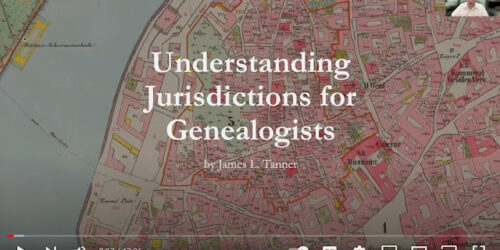Is The Family History Guide for Experienced Researchers?
Although The Family History Guide is often thought of as a learning center for those new to family history, it’s also surprisingly good resource for those who are more experienced. These are people who know the basics of family history and have “been around the block” with research. Two areas where The Family History Guide shines are these: making research easier, and making it more efficient. Let’s see how some of the key features in The Family History Guide help to make this happen:
surprisingly good resource for those who are more experienced. These are people who know the basics of family history and have “been around the block” with research. Two areas where The Family History Guide shines are these: making research easier, and making it more efficient. Let’s see how some of the key features in The Family History Guide help to make this happen:
1) Country Pages—There are over 60 country pages for research, as well as
- Pages for each U.S. state and links for corresponding counties
- England county pages
- Canadian province pages
- Australian state pages
The pages have links to articles and videos, as well as research sites and records databases. The main Countries page is divided into regions for quick access. See https://www.thefhguide.com/countries.html
2) QUIKLinks—You can get to record searches fast and easy with QUIKLinks … one click and you’re ready to start searching. QUIKLinks are embedded in the corresponding Goals of Country pages, so you can leverage what you learn in the steps, articles, and videos. We add to the QUIKLinks in The Family History Guide often, and they point to the most used record collections in FamilySearch, Ancestry, MyHeritage, and Findmypast.
3) Great research articles and videos—You can find a wealth of knowledge about research strategies and best practices in the Discover and Research Projects. These are contained in Project 4 for FamilySearch, Ancestry, MyHeritage, and Findmypast). Some pages are platform-specific (FamilySearch Research Tools, Searching Ancestry Record Collections, etc.) and some apply to all platforms (Forming Research Strategies, Solving Problems, etc.).
4) The Vault—You could spend a little or a lot of time digging through the Vault in The Family History Guide. Whatever your interest, you’re almost sure to find an intriguing article or video that hits just the niche you need. There is a handy index at the top of the page that makes it super easy to find the topic you want. See https://www.thefhguide.com/vault.html
5) Knowledgebases—Do you need to get some quick info on a research strategy, or background on a new country to do research in? There are two knowledgebases in The Family History Guide: General / U.S. and International. Each has an index of categories at the top of the page, and the knowledgebases are listed in the Learning Path menus (FamilySearch, Ancestry, MyHeritage, Findmypast) and in the Countries menu.
6) Training Others—If you are an experienced researcher, one way you can “pay it forward” is by mentoring and training others in what you know. The Family History Guide has great resources in the Trainers menu that make putting together presentations a breeze, as well as training tips for all facets of family history learning.
To close, here is a recent quote that was sent to us by Judith in Maryland, an experienced researcher who relates how the The Family History Guide made a difference for her:
“I am a volunteer at a family history center as well as Ward and Stake Family History Consultant. I have been referring all of our guests as well as members to explore this site [The Family History Guide] especially if they are struggling with a particular issue. This is an incredible resource. I have been working on my family tree for over 20 years … and have been looking for immigration records for my Germany ancestors. Thanks to The Family History Guide, I learned that many immigrants left from Bremen, Germany and went to Montreal or Quebec City due to cheaper fares, and then crossed into the United States. They were found!”





